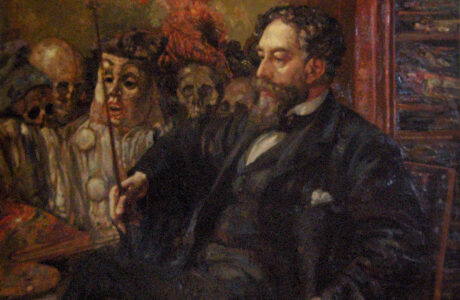[ENSOR & FRIENDS | Ensor 2024]
 Henry De Groux, "James Ensor", 1907 © Mu.Zee, Oostende
Henry De Groux, "James Ensor", 1907 © Mu.Zee, Oostende
Benjamin Haemhouts conductor
Alexandra Cooreman violin
Léon Rinskopf – Marche Triomphale
Jan Blockx – Vlaamse Dansen
Henri Vieuxtemps – Concerto pour Violon nr. 5 in A major, Op. 37
I. Allegro non troppo
II. Adagio
III. Allegro con fuoco
James Ensor – Suite van ‘La Gamme d’Amour’
1. Flirt des marionettes (1907)
2. Lento and Andante or Complainte et Berceuse
3. Gamme d’amour (false)
4. Marche funèbre
5. Enlacements (1905)
6. Pour une orgue de Barbarie (1911)
Camille Saint-Saens – Introduction et Rondo Capriccioso Op. 28 R.188
-
16.12.23 20:00TICKETSKursaal, Ostend
La Mer: an endless source of inspiration for artists from Claude Debussy to Charles Trenet. It really doesn’t have to be the Côte d’Azur or the Mediterranean coasts. Ostend was Europe’s leading seaside town in the late 19th century. A place where you could enjoy sun, sea and beach. Where one could parade among the beau monde. Where you could simultaneously listen and be seen at the Kursaal’s renowned concerts and recitals. They had the very greatest conductors and composers on the rostrum and the largest stars in classical music were visiting… and one James Sidney Edouard Ensor was in the loyal audience. The quirky painter was a loyal guest at the Théâtre Royale d’Ostende.
We revive the glory days of yesteryear, with the native of Ostend as guide and signpost. There is a whole year’s worth of events coming up: Kurt Van Eeghem launches a new book on the period, fine musical moments are planned at the Ensor church and Casco Phil briefly becomes the famous Kursaalorkest, the orchestra of the Kursaal. We zoom in on three aspects of these miracle years in as many concerts.
Not only was James Ensor a painter, he was also a very intuitive composer of music. He could not read notes, but with the help of his friend and Kursaal director Léon Rinskopf, the ideas still took shape, and were executed in Ostend.
back to homepage